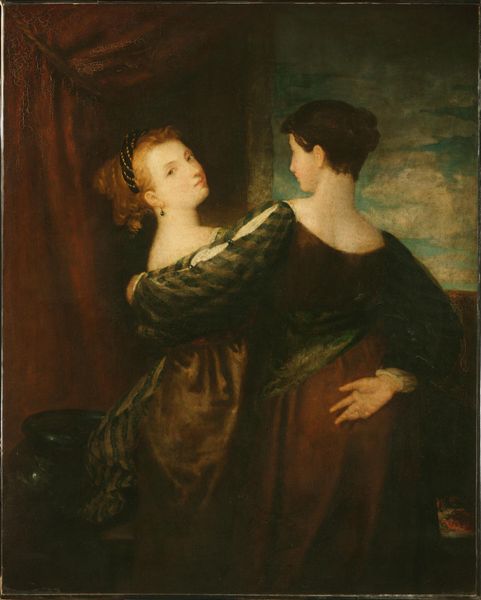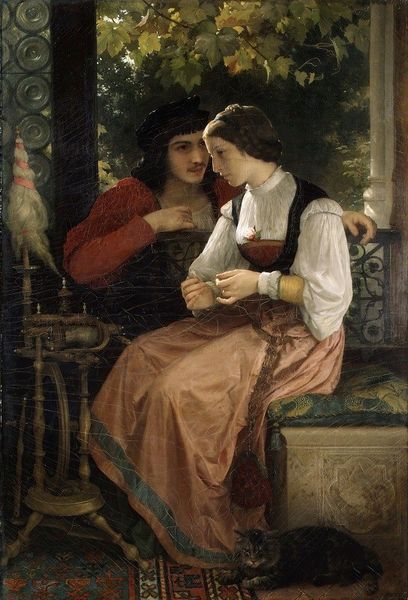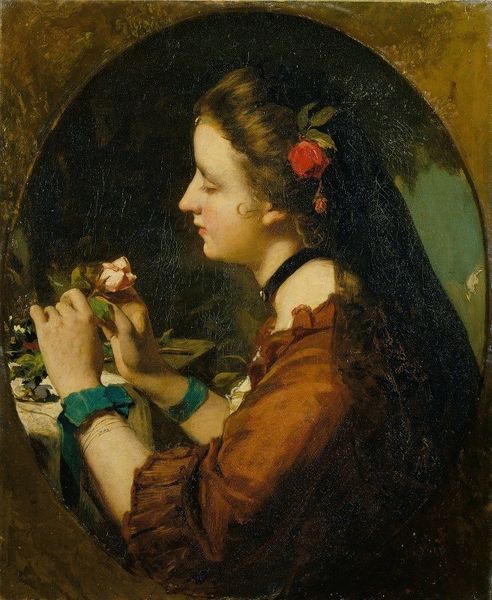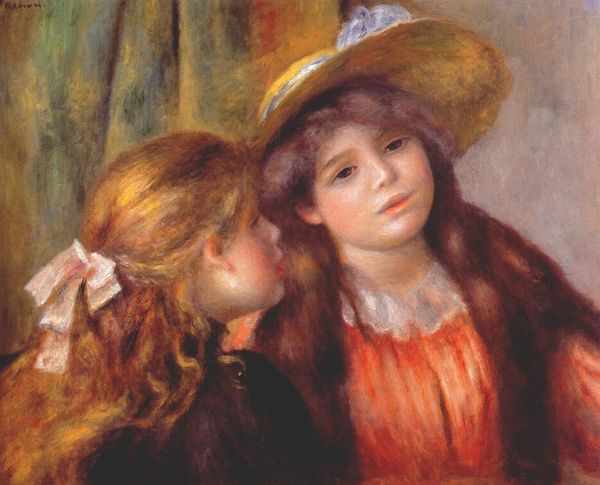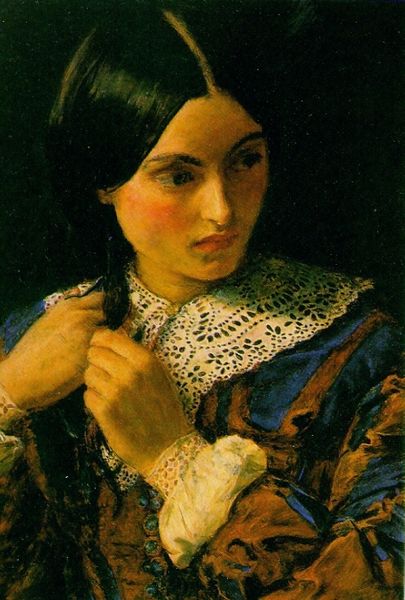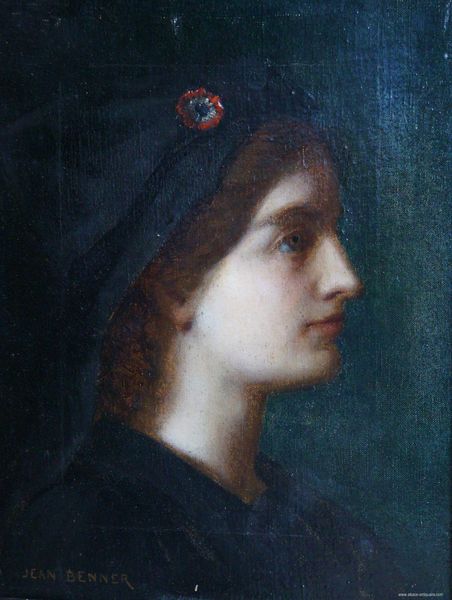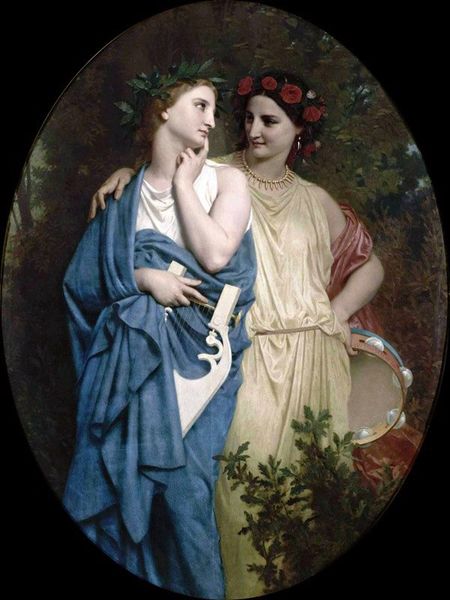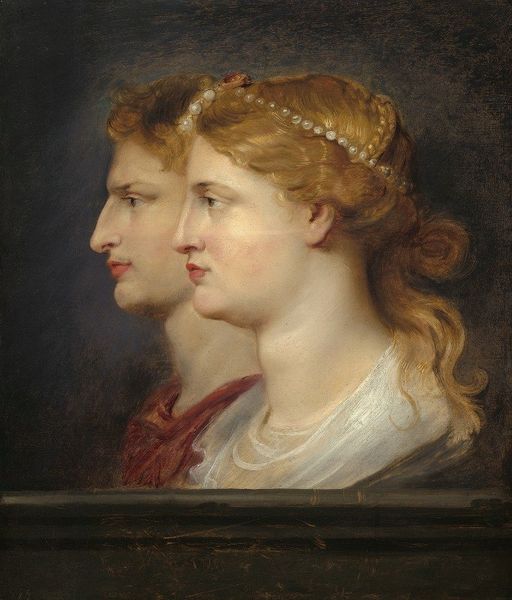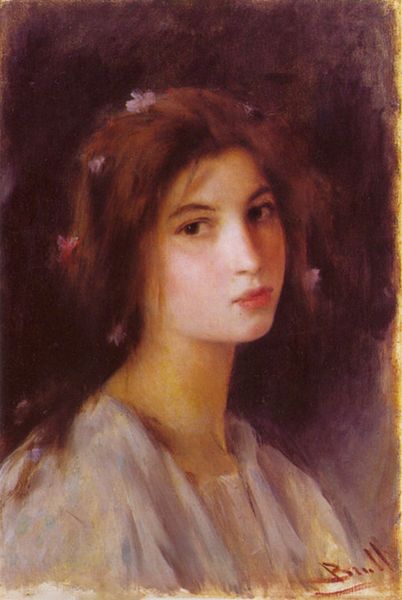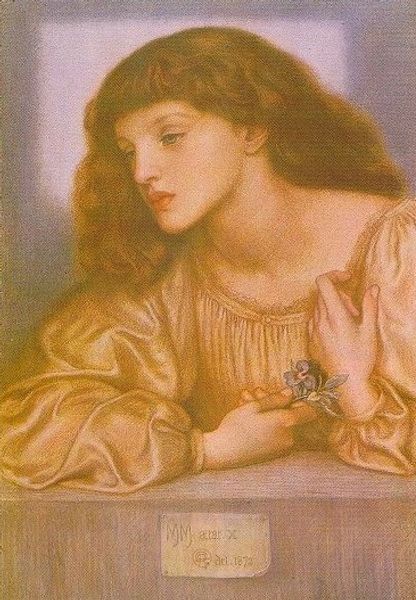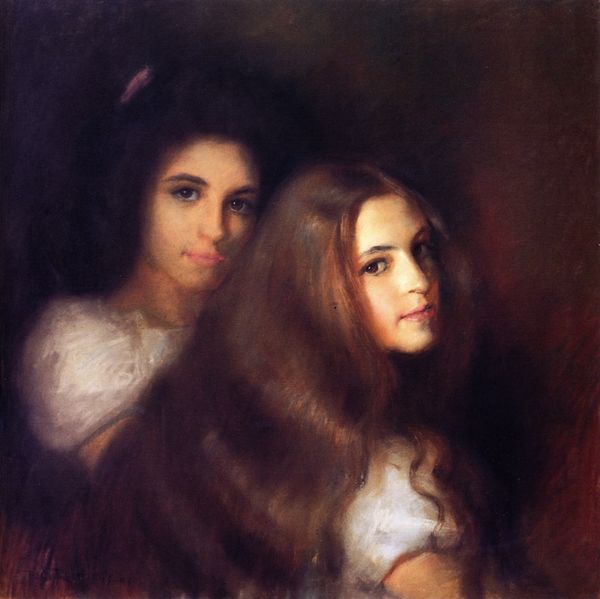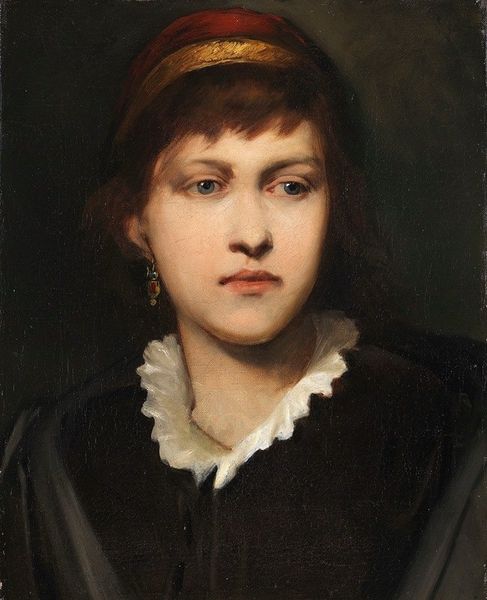
Copyright: Public domain
Curator: At first glance, it feels dreamlike. A nostalgic vision, almost sepia-toned even if it isn’t actually brown. Editor: Here we have Charles Gleyre’s "Two Women with a Bouquet of Flowers" from 1852. Gleyre was a prominent figure in the Academic art scene, later even teaching artists like Monet, Renoir, and Sisley. It’s interesting to consider this work within that lineage. Curator: Yes, you see that Romantic ideal here, but there is also such a stark juxtaposition between the dark hair and fair skin of the women. Note also the flower choices themselves - I see a lot of symbolism within their color and the fact the bouquet feels restrained. Do you agree? Editor: Definitely a deliberate orchestration of color and form. One thing I’m always fascinated by with Gleyre is his engagement, and indeed this piece's engagement with, early photographic processes. Don't you think? I mean, photography's development deeply impacted how portraits were conceived and created, presenting a direct challenge to painting’s role. The composition—oval framing, paired subjects—it all reads like a commentary on that shift in artistic practice. Curator: You're right! The softness evokes an early photograph, lending an intimacy. And the gazes of the women. One is gazing upwards, and one more down, as if in private reflection, almost creating an opposition that reinforces the emotional ambiguity of the scene. Editor: Absolutely, and that’s where the historical context enriches the reading, isn't it? Gleyre is wrestling with representation itself during a really transformative period for image-making. How can art retain its cultural relevance? Curator: Looking closely I wonder also, whether he’s capturing some fleeting impression of feminine introspection – a contrast in how these figures reflect on internal and external experience at that cultural moment. He also may not be. That too adds to the power of its symbolism. Editor: It really highlights how deeply historical forces influence individual expression. Curator: Indeed, and it speaks to how one seemingly quiet piece can invite so much meditation.
Comments
No comments
Be the first to comment and join the conversation on the ultimate creative platform.

